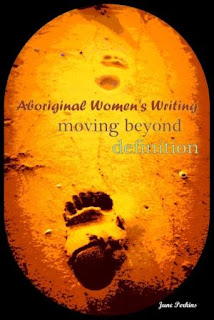 Last year I stood in the authors’ green
room at the Brisbane Writers Festival while friend and author Veny Armanno
introduced me to one of my writing heroes, Kate Grenville. I’m not sure what I gabbled
out: whether I told her about the snail-mail fan letter I’d sent via her
publisher years before, telling her how much I loved her work and that I too
was writing a book; whether I said how thrilled I was when she wrote back to
thank me and wish me all the best.
Last year I stood in the authors’ green
room at the Brisbane Writers Festival while friend and author Veny Armanno
introduced me to one of my writing heroes, Kate Grenville. I’m not sure what I gabbled
out: whether I told her about the snail-mail fan letter I’d sent via her
publisher years before, telling her how much I loved her work and that I too
was writing a book; whether I said how thrilled I was when she wrote back to
thank me and wish me all the best. I have a feeling that I didn’t manage to say anything very sensible at all, but I remember that when I held out for signing my copy of her new book, Sarah Thornhill, and my beaten-up, brown-paged, dog-eared and worn copy of my all-time favourite of her books, Dark Places, that she turned that one over and over in her hands and said, ‘Now this is well-loved’.
Dark
Places tells the story of Albion Gidley Singer,
father of Lilian who was the star of Grenville’s book Lilian’s Story which was actually published first. Grenville has
said that having put Albion on the page in LS,
where he abuses, stalks, threatens, and assaults Lilian before finally having
her committed to an asylum, she wanted to explore how he became that man.
Sounds grim, I know. And it is—but at the same time Dark Places has an extraordinary voice I can’t get enough of and a dramatic
irony that makes its reading a total joy.
I wanted to write in detail here about the
character of Albion, getting across the sense of how he strives for his father’s
approval and is hurt by his careless dismissal but then later does the same to
Lilian with a complete lack of insight; how he believes that women are always
thinking about sex, that even baby Lilian when she stamps in his lap knows
exactly what she is doing, that when they say no they really mean yes and
actually more please; how when he feels threatened or weak (which is often) he
takes his fear and anger out on those around him—but to boil down Grenville’s
deft prose into anything more than that bald summary is beyond me.
‘I lay under the coarse cold sheet [in the
boarding school dorm], with no possibility of arms around me, and felt a fear
like no other, a fear that squeezed cold tears out from under my tight-shut
eyelids. “I cannot bear it, I cannot,” I tried to tell that fear, but it would
not leave me, but froze my heart with its emptiness, left me sucked dry and
shivering, a dead leaf in the wind. I lay very still and tried to resist that
nagging fear, like a flow of cold water, that was never far from me, the fear
that this was what life was, for ever and ever until you died: being locked up
within yourself, all alone, having to pretend all the time, every minute, that
you were absolutely perfectly all right.’ (16)
‘But if I unfolded the petals of my
embattled self to Cargill, if I allowed his arms around me, his whisper in my
hair, and the fondness in his eyes: if I let myself be undone by all this, and
stand naked in the blast of love, I would risk the worst death of all. I would
not survive such a death as that, as Cargill having opened my soul and then
with his mild manner moved on, leaving me flayed. It was pride and deepest
fear, and it left me dry-eyed and stony-hearted later, leaning on a fence,
thinking with despair how much life I still had to live.’ (25)
Pride and deepest fear sums up Albion
perfectly: it is what drives him in every situation. All makes him sound
terrible, I know, and he is, and yet . . . it is a book I will read many times
more.

Guest reviewer Katherine Howell is the author of the Detective Ella Marconi crime series. Silent Fear is the the fifth book in the series and will be released tomorrow, February 1, 2012. Her work has won awards and is published in multiple countries and languages. She teaches workshops in subjects including editing and suspense. So far, only one of Katherine's books, Frantic - her debut novel - has been reviewed for the AWW 2012 challenge. (See here for the review.)






